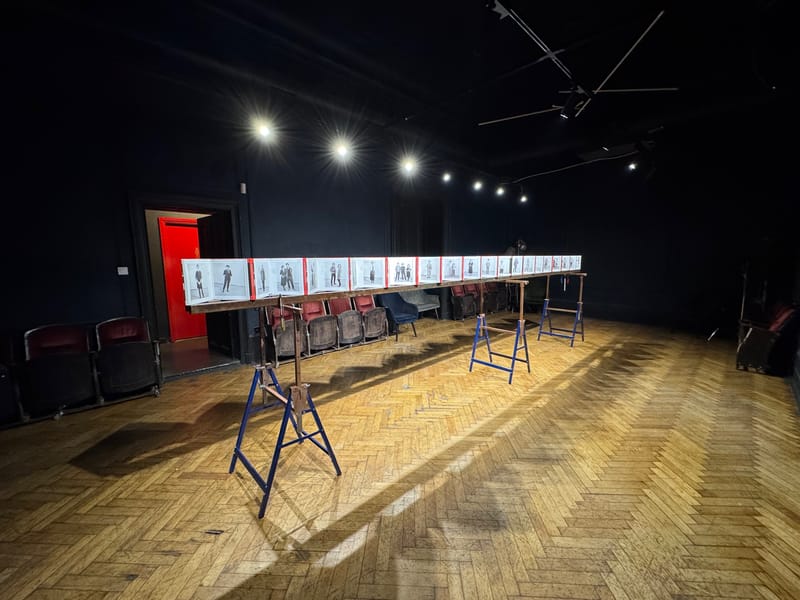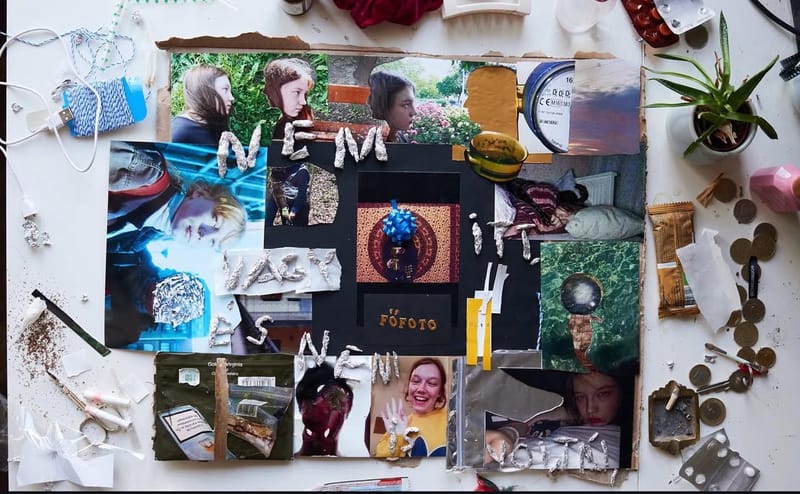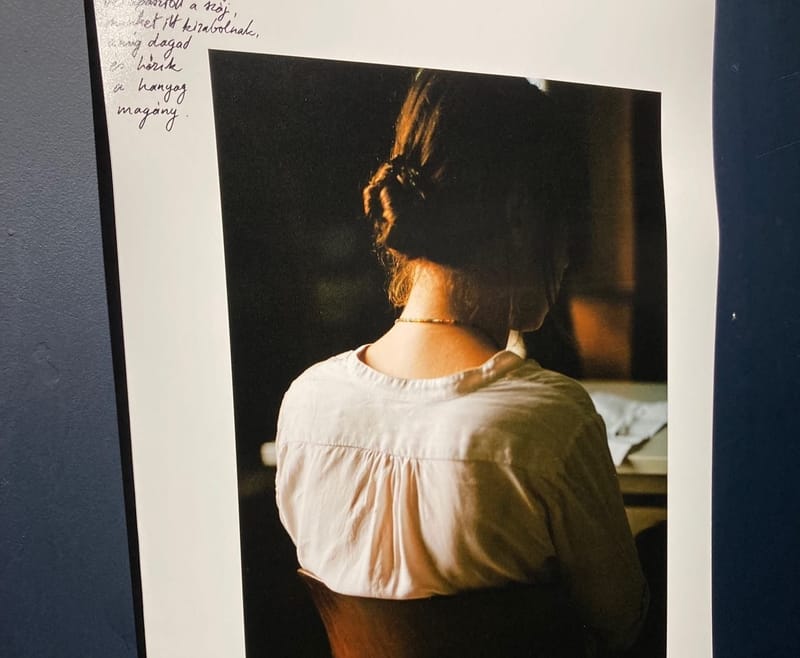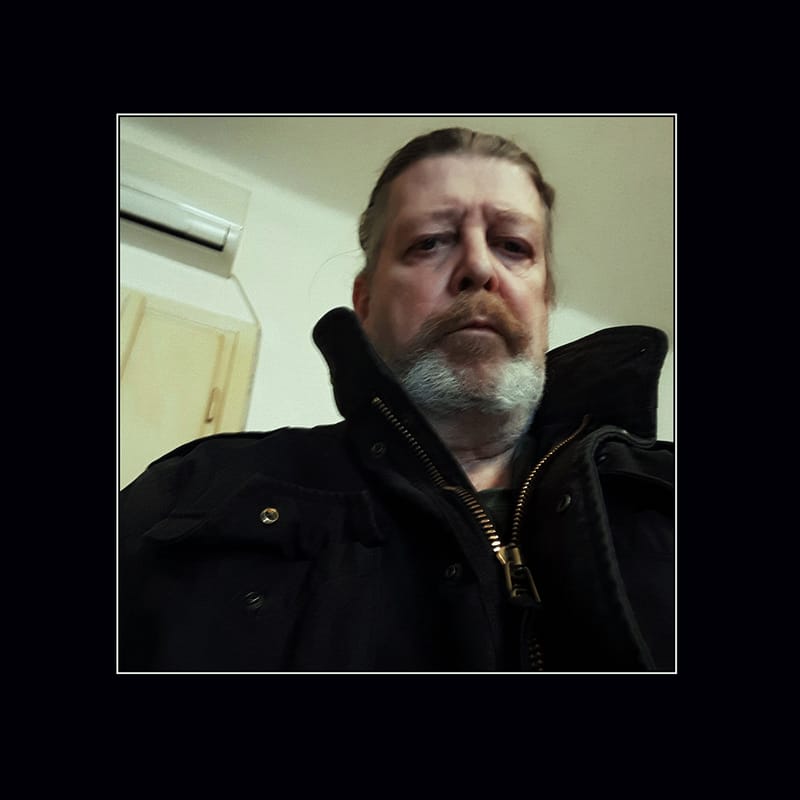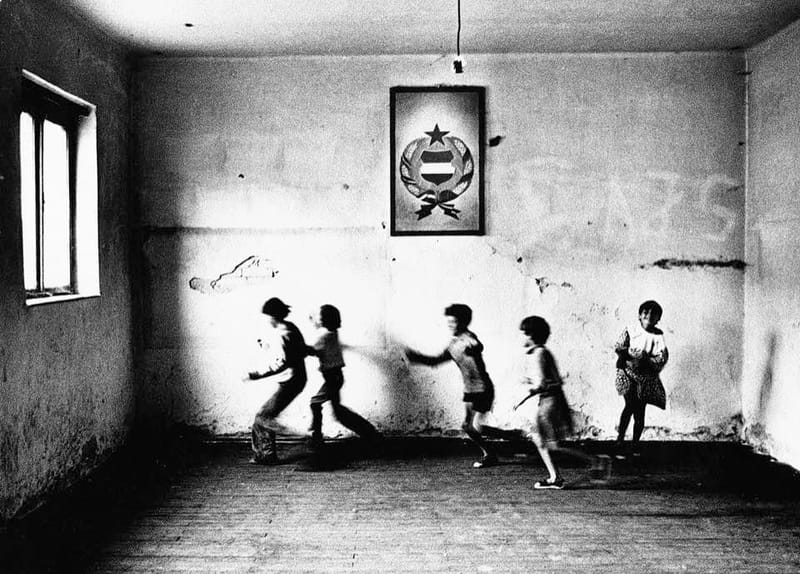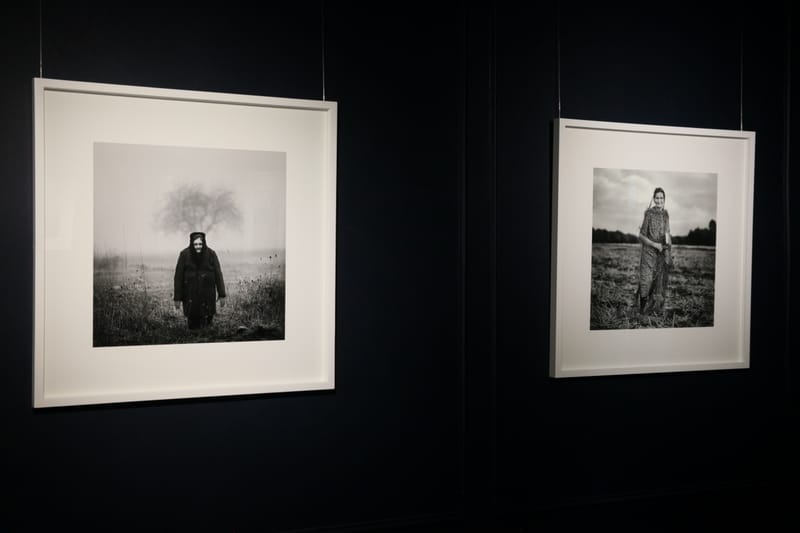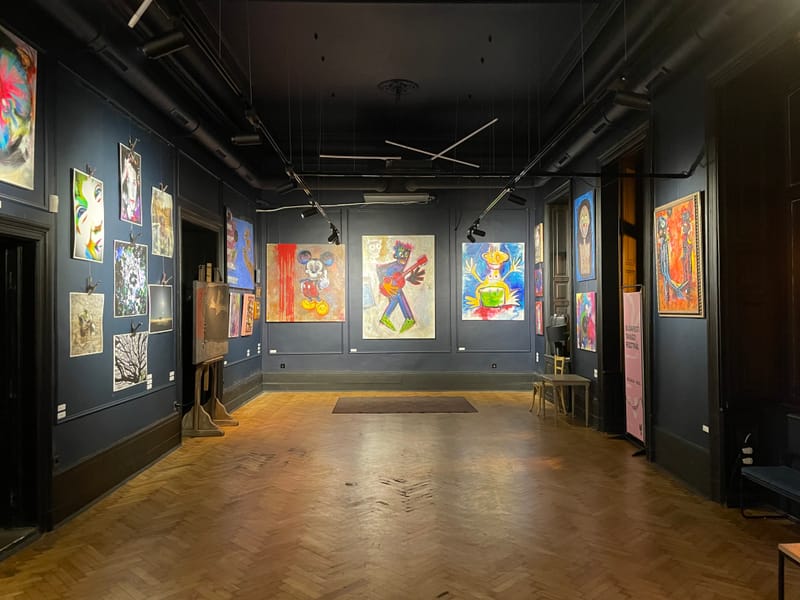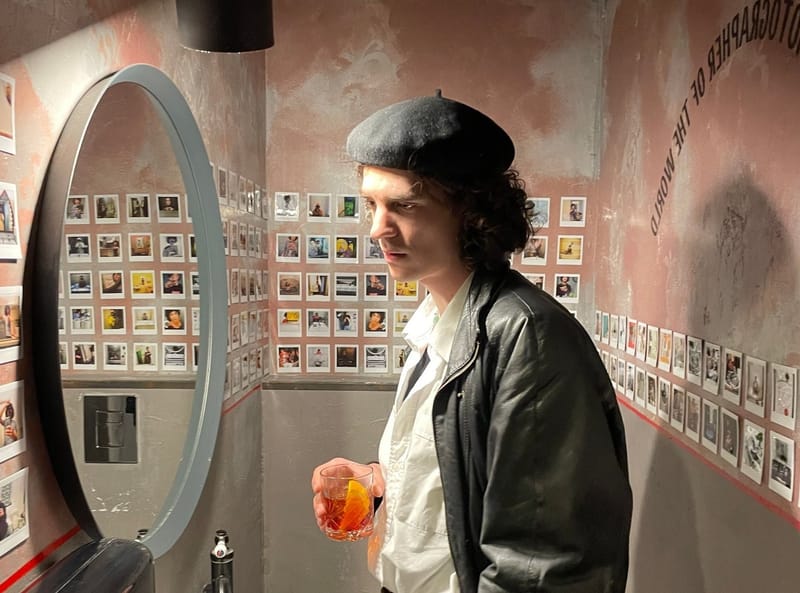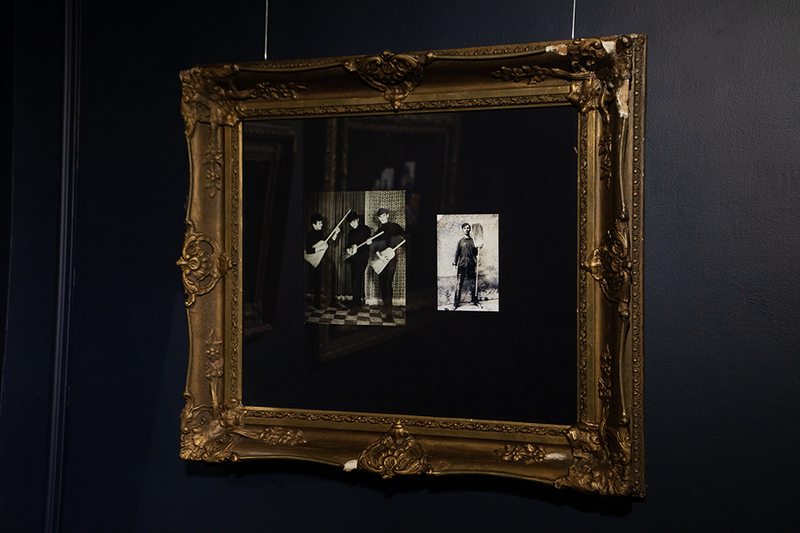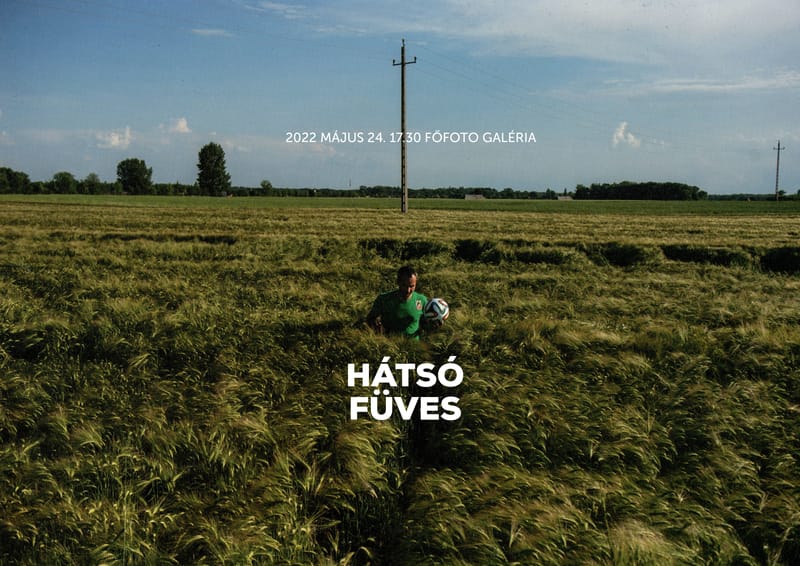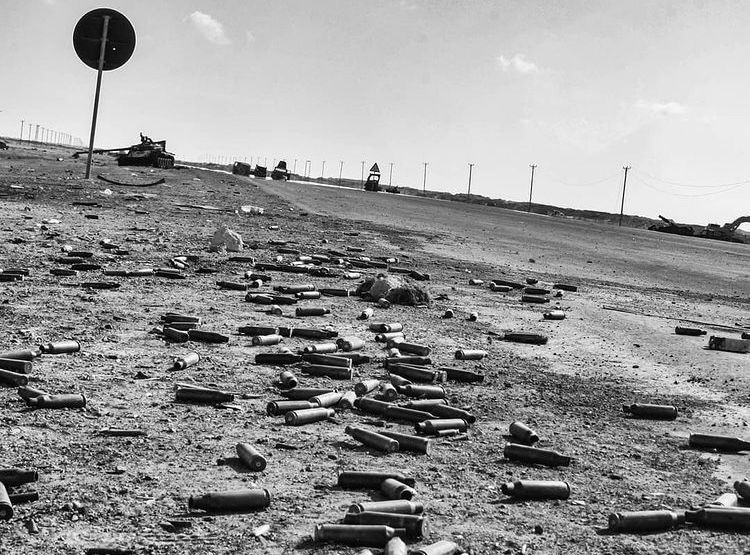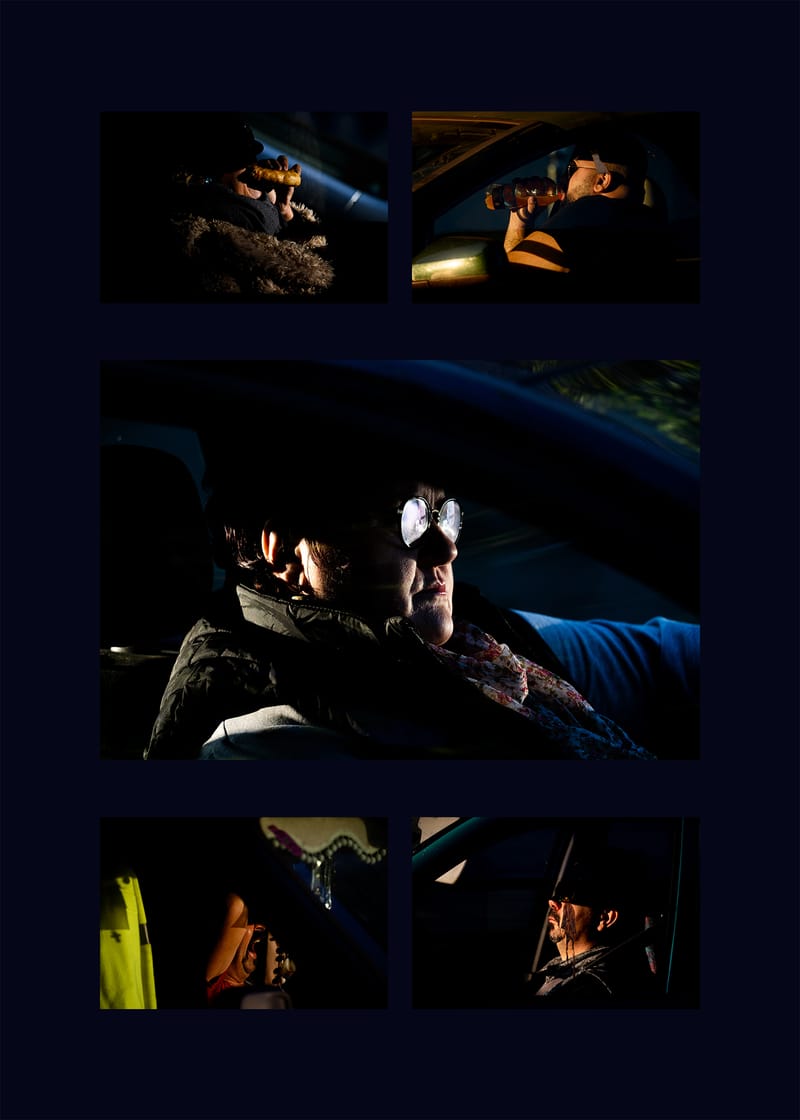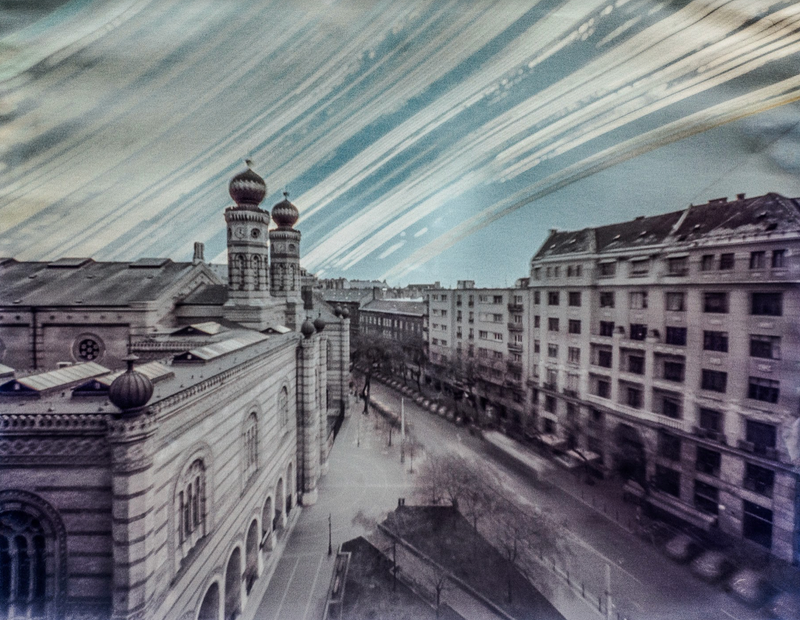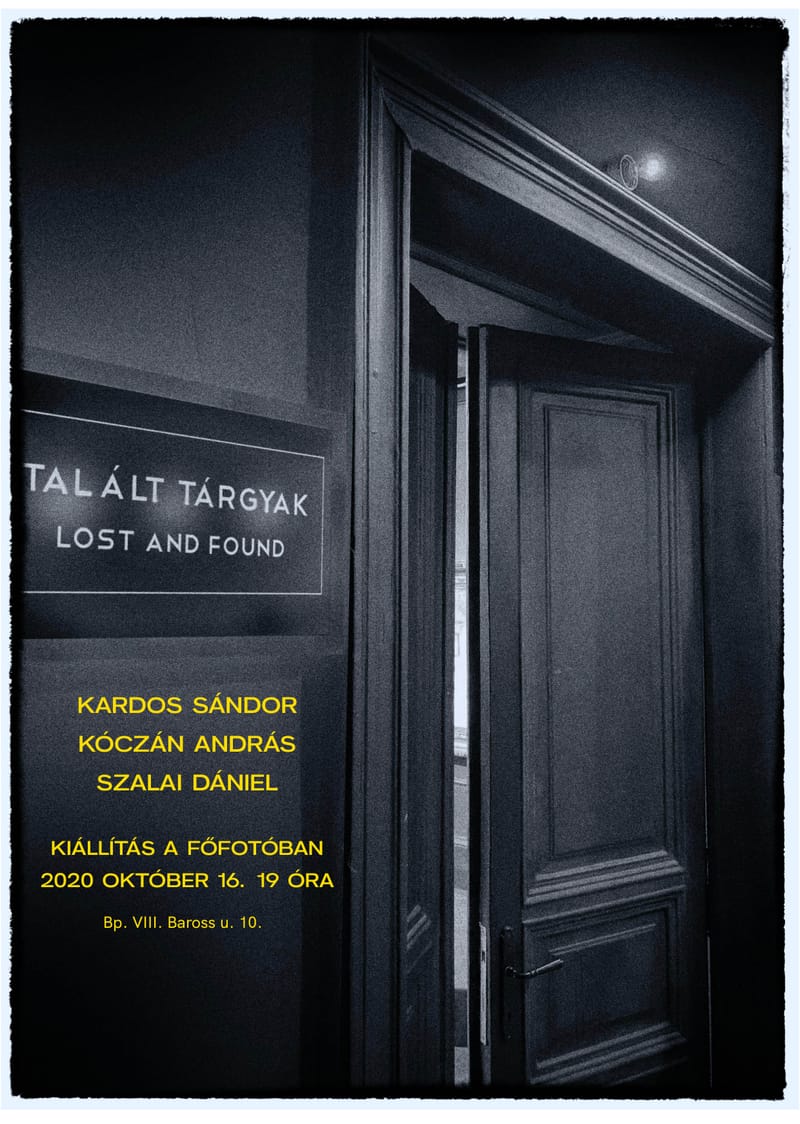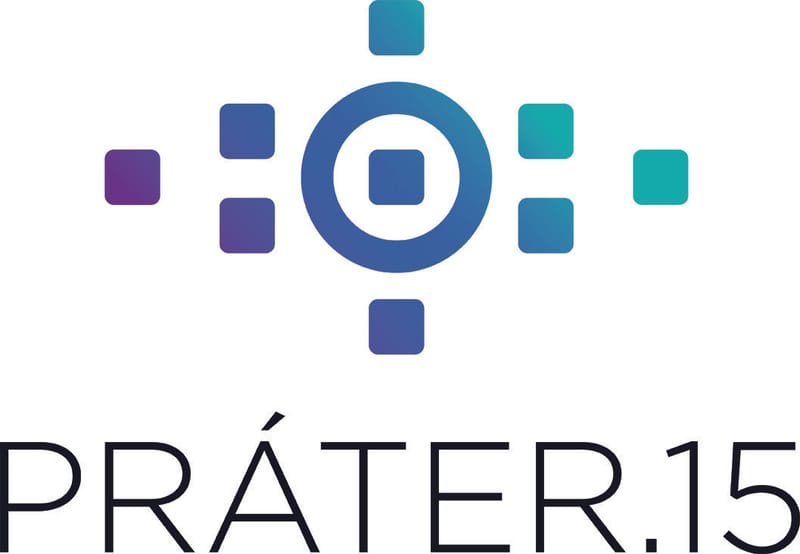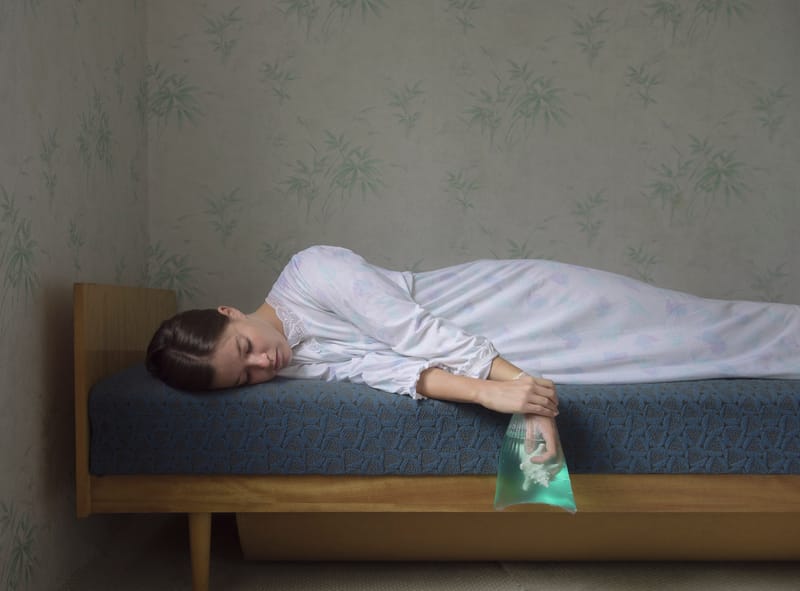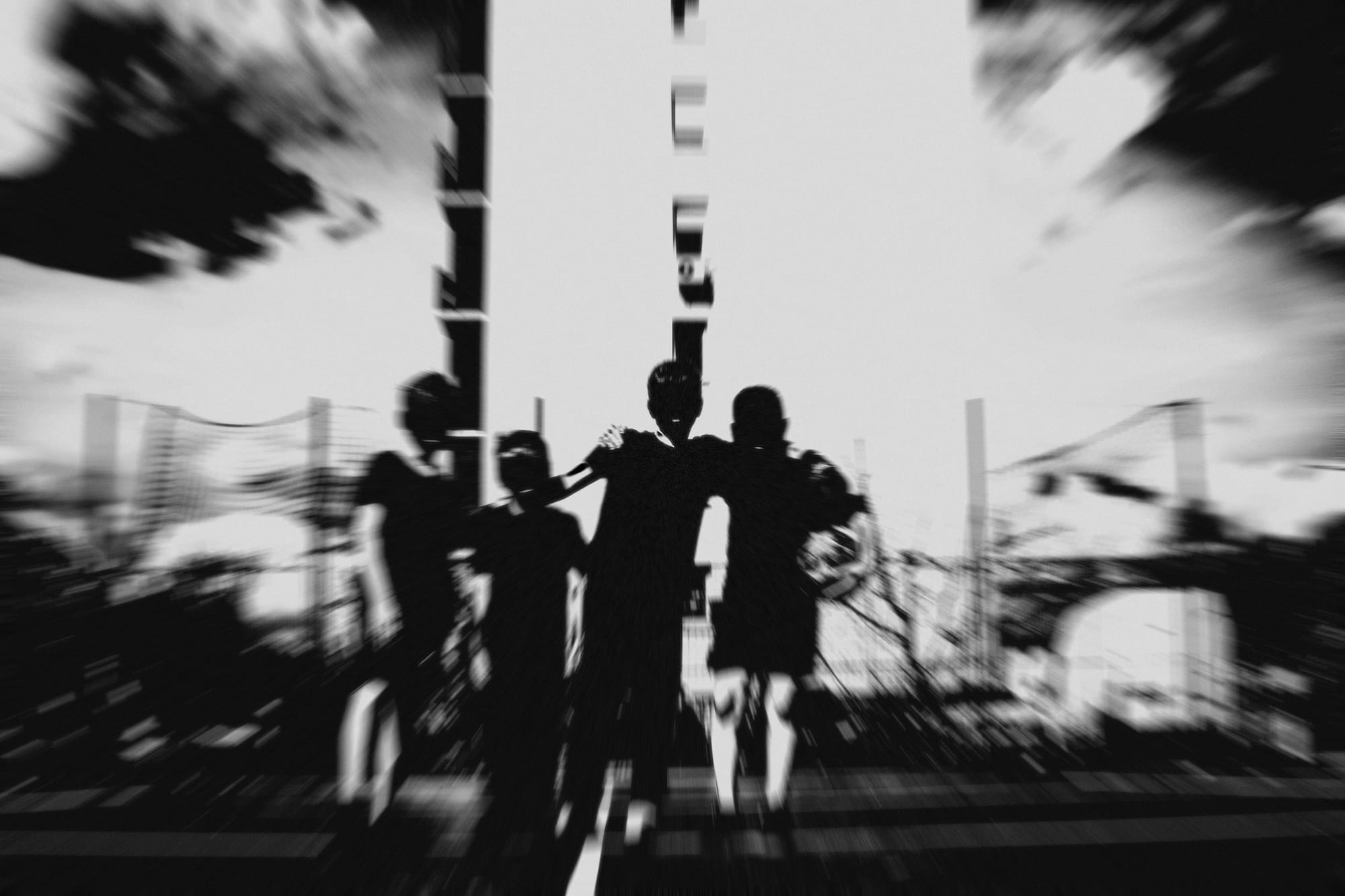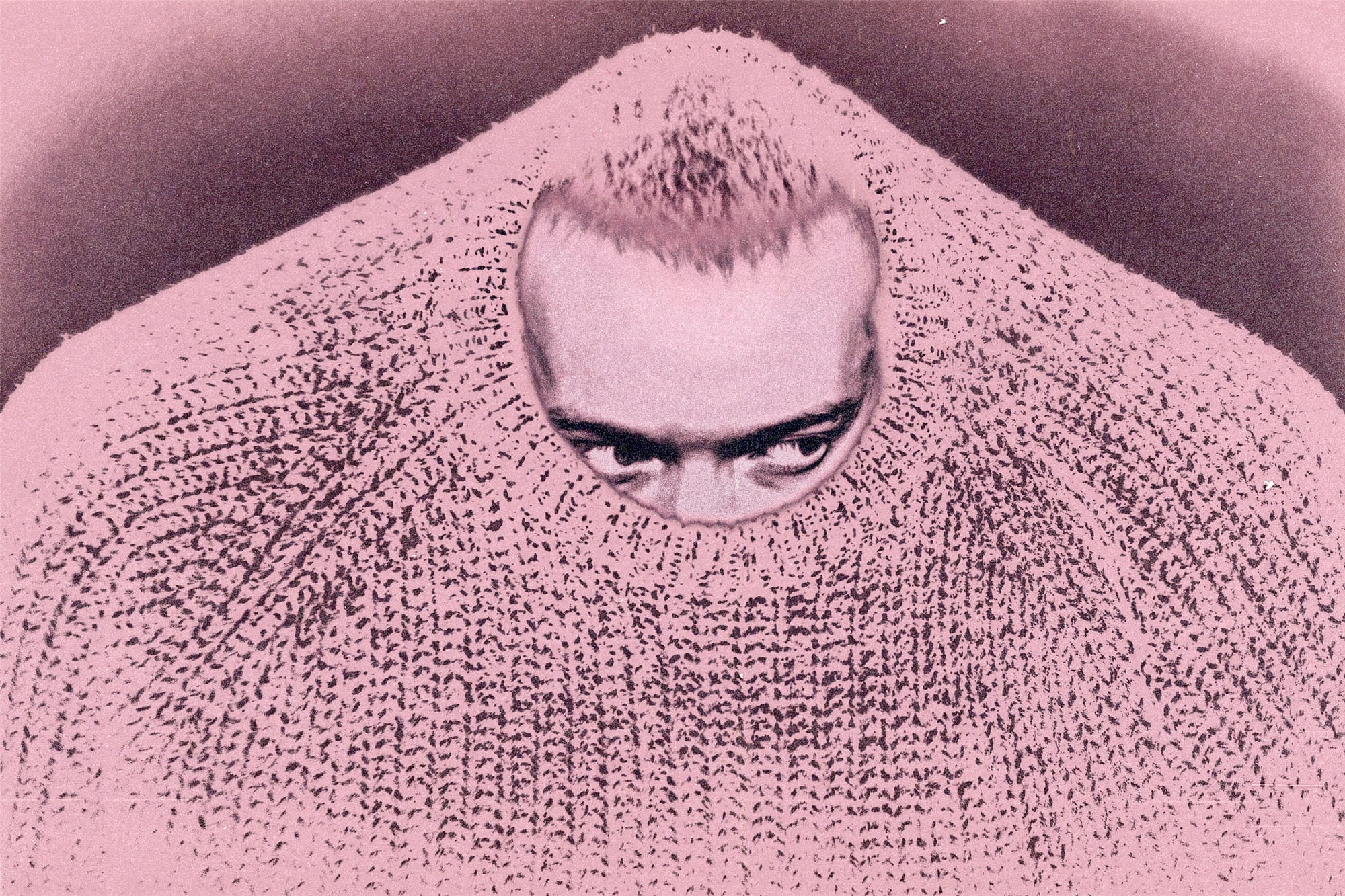The struggle of giants and the origin of Instax. What is Big Shot Stuttering? Which is the Retail Polaroid? Part II of the Polaroid Story
Read MoreEzüsthaloidon innen
Biteken túl
About us
ABOUT THE PRINCIPAL PHOTOGRAPHER
Everything about photography. Főfoto is a gallery, café, and photo shop in the Palace District specializing in Hungarian contemporary and classic photography.
PHOTO SHOP
Movies, cameras, accessories
Our photography store offers all the essential supplies for traditional photography, from film and instant materials to books and cameras.
GALLERY, EXHIBITION AREA
Unique creations in a unique space. No more White Cube, check out our showroom!
Webshop
services
Film Developing and Scanning
Development of traditional films: C41, B&W, E6, Cine Scanning of film rolls Hagyományos filmek előhívása, C41, B&W, E6 Cine Filmtekercsek szkennelése
Venue Rental & Events
Venue Rental & Events Főfoto’s interior spaces are unique and special—elegant enough to host unforgettable events. Whether it’s a book launch, presentation, lecture, or roundtable discussion, bring it to Főfoto! Helyszínbérlés rendezvényekre A Főfotó belső terei különlegesek és egyediek, ugyanakkor elég elegánsak ahhoz, hogy különleges események színhelyéül szolgáljanak.
Blog
The first piece in a series in which we present the companies that were iconic players in analog photography. Polaroid is a beautiful example of ascension, fall, and resurrection from the dead.
Read MoreWhy do movies have expiration dates and what happens to the film as it gets older? What about the coils found at the big tree? How do we shoot our expired movie? How do we recall our expired movie? What if not only the grandmother is in the pictures?
Read MoreIs it worth storing our movies in the fridge? What happens if they don’t lie on the ice like Walt Disney? Nothing. Or yet?
Read MoreGetting started with analog photography. Camera and film choice, dressing, behavior.
Read MoreEvents
In 1985, at the Freshman Ball of the College of Applied Arts, László Lugosi Lugo took a series of photos of those present, narrated by Ferenc Bodor. 20 years later, the material was published in book form by the Kieselbach Gallery, and now, after another 20 years, the Főfoto Gallery is organizing an exhibition from the book with a special installation. This is how Lugo is remembered.
Kizlinger Lilla: You are not here and you were not An exhibition of my last 8 years, with him. This is a funeral. We are burying ourselves. So far everything has been about you, and now finally about me. The escape is over, the game is over. This is a freedom. However, it will be right if I close my mourning properly and say goodbye to these 8 years. ,,and it doesn't mean you don't love me, it just means you can't do this with him now and first of all there is Lebowski, and school, and the play, and the movie, everything will be fine,, Stockholm, August 2021
Between December 7 and 16, Főfoto can visit an exhibition related to the film Magyarázat mindarre, in which the pictures taken on the set form a special unity with personal, handwritten poems. The shooting of the independent Hungarian film Magyarázat aller took place in the summer of 2022, and its moments were captured by Réka Vajda. The settings, compositions and captured moments of the images go far beyond simple booth photos. Through Réka's color and black-and-white, medium-format images, we see some scenes of the film from a slightly different perspective. Gábor Reisz, the film's director, wrote a couple of lines of poetry every day on the way to the shooting location. Sometimes these lines tell a story, sometimes they convey in a completely associative way the mood that defined this extremely intense, tiring but all the more joyful period. Gábor's texts are handwritten on Réka's photos, thereby creating a clear and close connection between film, photo and text that can be freely interpreted by everyone. All the pictures in the exhibition can be purchased with the handwritten poem on them.
Exhibition of the still images of the cameraman who started out as a photographer and later became internationally famous. As the opening of the exhibition, he was remembered by his colleagues and colleagues, with the help of Attila Janisch, Gábor Szabó, Tamás Dobos and István Molinár.
Joint exhibition with the Einspach Fine Art and Photography gallery "If there is a world beyond the edge of existence, the photos of Judit M. Horváth and György Stalter are about this. It is a cruel world: misery, backwardness, destruction - it is not good for us to face it. The sight sticks in the throat, suffocates, you can't get rid of it. And not really when the frozen moments of misery are naturalistic, but when a lyrical interlude - a loving look, a pair of eyes marveling at the world - cuts into our image almost like a whiplash." /Foreword by Árpád Göncz to the book Más Világ: Más Világ: Más Vílág by Judit M. Horváth and György Stalter, published in 1998/
Karczeby - Inextricable Adam Panczuk's exhibition in the Main Photo Gallery In one of the dialects spoken in Eastern Poland, which is a mixture of Polish and Belarusian, people who were strongly attached to the land they had cultivated for generations were called "karczebs". Karczebs cleared forests with their bare hands to gain farmland. However, the word Karczeb was also used to describe what remained after a tree was cut down - a stump with roots that remained in the ground. This can also be applied to people: even during Stalinism, it was not easy for the authorities to eradicate them, to drive them off their land. They often paid for their attachment to the soil, their land, with their freedom or their lives. After their death, they became one with the farmland, so the soil itself became karczeb, which was later cultivated in this spirit by their descendants. After the funeral of his grandfather, the author, Adam Panczuk, could not get rid of the thought that came from the priest's mouth: - Your grandfather explored the ground all his life so that he could return to it after his death. Panczuk realized that his works had lacked the power to touch the audience. He prepared for the Karczeby series for two months: he made notes, talked to people, so he devoted plenty of time to preparations. The images in the series radiate a deep connection with the subjects of his pictures, and although the figures sometimes pose, they remain very authentic. The portraits are serious, but they are imbued with a kind of lightness. We can admire and smile at the same time, and perhaps understand what it means to be a Karczeby.
The exhibition lists the old and new works of visual artist Tibor Kiss, musician-lyricist of Quimby and Aranyakkord.
Exhibition by Orsolya Török-Illyés in the women's washroom of Főfoto. 4 years of persistent selfies in public toilets, train stations, McDonalds, gas stations and other places.
The special thing about the exhibition, which is made up of images from family archives, is that the photographs on display, like the memories, slowly fade until they finally disappear completely. The works in the exhibition Before We Disappear were literally only on display from November 8th to December 5th, because as the title suggests, they slowly disappeared from the exhibition space. The pictures remained, of course, but they faded more and more day by day before they disappeared for good. Hungarian families – especially the older generation – and various institutions and organizations have many photographs and documents that have historical value. These photographs and documents can be damaged or destroyed over the years, which can result in the loss of not only the object, but also the associated story, memory and, with it, the value. The exhibition would like to preserve these memories and the stories associated with them for posterity, making them part of the collective memory, thereby enabling the completion of national historical analyses and the support of research. Based on the idea, an exclusive photo album with the same title as the exhibition was published at the closing event of the exhibition, where the rescued images of the most cherished treasures of Hungarian families can be seen. These photos will no longer disappear, and perhaps we ourselves will have a little more difficulty.
"Where did it go?" – An exhibition of the legendary but forgotten album covers of Hungarian pop history. At Főfoto Galéria, we have now collected popular pop culture images that were once found in Hungarian apartments in millions of copies. The whole country knew these photos, filmed them, looked at them, loved them, because they were an inseparable part of the experience that people took home when they bought the record. The album cover was a separate genre. He defined and managed the image of the ensembles. It was a point of reference. The images on the album cover identified each musical era. We think it's important to elevate these images to where they should have always been. Let's show that these works are real works of art.
Everyone is Petőfi. No joke. More like a game. It is not customary to play with Petőfi. But he loved to play. With his own fate and life as well. We have a daguerreotype and several legends from Mázsány. How many faces are there? Petőfi is the Hungarian ideal. The Hungarian poet. The most popular. The most patriotic. The most popular. The most revolutionary. The divine talent, the romantic eternal lover. The poetic genius. The star, the conscience of the people, the mystical liberal, the religious republican, the incompatible, the troublemaker, the bad soldier, the martyr. All Petőfi. Everyone is Petőfi.
There are many things worth recording that cannot be done with a camera. However, photographs undoubtedly have one great quality: they are not really debatable. It is very difficult to explain to the group of friends that the person who took the photos is actually an obnoxious person who was not even there, and what he is talking about did not even happen. There is no fantasy in the world in a documentary photography. Everyone can see what is written on it, and if fraud has occurred, it can be easily found out. As time passes, every written word becomes debatable, but a photograph never is. They are not refracted according to whether their creator is politically sympathetic or not, friend or foe, male or female. I see this as the most important feature of my photographs, which is why this album was created, from the images of which I selected the exhibition. Sándor Jászberényi
"When the first and last rays of the sun shine down the long boulevards of Budapest at a low angle, directly illuminated by the windshields of the cars in traffic, it is an excellent opportunity for some essence of the life of the motorists on the street, otherwise invisible on gray weekdays, to come into the spotlight and to be immortalized by stopping at the red light. the shadow of the folded down awning ensures natural eye contact, so we can concentrate impersonally on the characters and actions, or on the play of details, lights and colors."
The world's loneliest cameras stood in Budapest for six months, perfectly hidden. No one knew that the silver in the boxes was giving way to the light, drawing out something that was there, but not like this and not then. The time spent in solitude for half a year left a special mark on the light-sensitive surface. The light source has changed into a point source, so it is now able to create a gravitational field, which this time absorbs the viewer. The streets are deserted, the spaces are empty, but this is actually just an illusion: such a long exposure time is enough to make all the townspeople turn around in front of the cameras, yet the scene seems deserted. The time stands in a strange way in the pictures, the vegetation has not yet fully grown, there are no tendrils creeping on the side of the strip house on Szőlő Street, but the people have already disappeared, the city seems to have always been just a set. The present shows the future, as silver and light wanted. Péter Egyed's Napnapló exhibition at Főfoto from the second of February
One photographer, a sun studio out of a truck, one year, and lots of portraits. A country against a white background, Richard Avedon's meeting with Lajos Parti Nagy. Photos by János Krasznai
Petra Collins in the Main Photo Toronto-born, Los Angeles-based Petra Collins is one of the few artists whose work has not only influenced the visual culture of the 2010s, but also our collective visual consciousness. Collins is not only a photographer, but also a director and a model, one of the most striking representatives of the so-called new wave feminism, an artist who is never afraid to talk about femininity, sometimes with humor, sometimes poignantly, sometimes aesthetically, but always honestly. Collins has an important message for women to boldly express their vulnerability, sensitivity and sexuality on camera here and beyond. Her works appear in the most famous magazines, but she has also created campaigns for Gucci and Adidas. What they have in common is that she is given free rein to create by even the biggest brands, and she is able to create such a unique world in her images. She is proud of her Hungarian roots, and family ties are important to her, and her series made in Hungary features family members. The pictures trace back to the happiest, cloudless summers of childhood, when the world was still full of mystery, joy and wonder. Toronto born, Los Angeles based Petra is one of those few artists whose works not only influenced the visual culture of the 2010s but also our collective visual consciousness. Collis is a photographer, a director, and a model, one of the most forceful representatives of the so-called New-Wave Feminism. An artist, who is never afraid to speak about her femininity either with humor, or by shocking the viewer, yet remaining honest every time. Collins's important message to women is to bravely express their vulnerability, sensitivity, and sexuality from either side of the camera. Her works appear in the most prestigious magazines, she contributed to campaigns for Gucci and Adidas, among others. The common feature in these projects is that she gets a free hand from the biggest brands thanks to the distinct aesthetic she creates in her pictures. She is proud of her Hungarian origin, and family bonds are very important to her. In the series made in Hungary her family members appear. The pictures trace back the happiest, carefree childhood summers when the world is still all mystery, cheerfulness and wonder.
Lost and found Dániel Szalai's series Belongings of the Road (2010-2011) consists of objects found next to a suburban highway in Budapest, typically thrown out of cars. From these found objects, the artist selected 36 interesting pieces, sometimes personal items that he once owned, which he scanned into high-resolution photos, of which the Főfoto Gallery is now presenting 15. Sándor Kardos' series consists of some previously unpublished photos with strange stories. These have a story not only about the scene shown in the photo, but also about how they were found and the damage that occurred on their surface. When negatives are not stored properly, time not only leaves its mark on the subject, but also physical changes occur on the medium, making them prone to mold and fragmentation. In the pictures found by Kardos, these changes do not arouse disgust, but rather, with their contingency and discoloration, they give additional meaning, they become part of the picture. A sudden storm in the Greenland highlands not only brings hail, but also an unexpected surprise. András Kóczán and his friends retreated from the storm to an abandoned house in a fjord-like area, where they found an exposed but undeveloped roll of film. Upon returning home, he entrusted his younger brother, Gábor, with the development. The pictures reveal the strange relationship of an Inuit family with the camera, for which the gloomy but sunny Greenland landscape provides the setting.
Introducing the Prater.15 group of photographers Fifteen different people, fifteen different pasts, life paths and interests, connected by two things: a love of photography and a professional cradle, a common school. These two things guided the newly graduated photographers in the summer of 2020 to organize their debut exhibition. Today, it is a unique thing in Hungary, and in recent decades there has been no example of a class just leaving school to look for a gallery to present their work. But the class leaving the “Prater” didn’t want to line up, so he decided to take a big step. Their determination was reinforced by the fact that, due to the special situation in the spring, they were unable to say goodbye to school in a worthy way and close the common years. Thanks to the lucky change in conditions, one of the iconic venues for photography, Főfoto, is hosting an exhibition that can be viewed for two weeks. Venue of the exhibition: Főfoto, 1085 Budapest, Baross utca 10. Date: 27 August - 10 September 2020 Opening ceremony: 27 August 2020 7 pm Admission to the exhibition is free of charge. The exhibition was organized by photographer Péter Kis
I put the spectacle in my head before I took a photo. I drew ideas from dreams and fantasy, says Matti Varga, whose 3 series of pictures can be seen in the Main Photo Gallery. Another Rome - Another Rome Stranger I Know - Familiar Stranger After August- After August
Contact
- Budapest, Baross u 10, 1085 Hungary
- +36-301605222 - Cafe, table reservation
- +36-703670891 - Photo shop
- gabor@fofoto.hu
- Monday-Friday 9.30-24.00 Photo shop 12.00-17.00 Saturday 18.00-24.00 The photo shop is closed on Saturdays
To buy a camera or to inspect a camera, an appointment is required!
not what we wrote

Roadster Magazin
The Main Photo is in a classy place, one half of the windows face Baross Street, the other the Five Pythars, the MÁV Symphony Orchestra lives in this street, if you leave the windows open, the street will be filled with music. Due to the Ervin Szabó library and the universities, it is a lot of young people, so it is a lovable part of Pest, and it will be even more lovable with the opening of Főfotó. Because the Main Photo brings here a good café, an activity that is becoming more and more popular again, a passion for analog photography, photography and a great deal of old school finesse.
Read More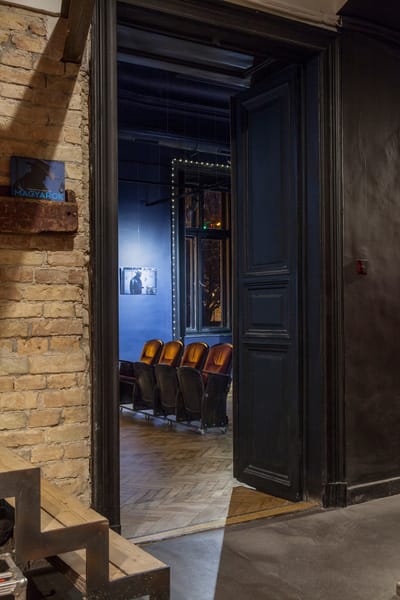
welovebudapest
Due to the increasingly crowded exhibition halls in Western Europe and the United States, it has been a long-standing practice to hold exhibitions in private homes, and pop up galleries are also growing in popularity. We also have one such event, but the Main Photo, which opened a few weeks ago at Kálvin Square, puts what we knew about alternative exhibition halls in a completely different aspect. There was once a district party office in the room, but the former private apartment has been empty for at least a decade - it is home to the long-cherished dream of János Krasznai and Gábor Zsigmond, the main photo combining a gallery, a café and a shelter for analogue photography.
Read More
Condé Nast Traveler China
和 家居 产品 , 带来 完整 的 优质 生活方式 体验twentysixbudapest.com Fofoto 当 城中 美术馆 展厅 越来越 拥挤 时 , 在 住宅 住宅 中 展览 展览 和 快闪 店 变成 了 一种 可行 的 惯例。 位于 Baross的 的 of 原本 是 一座 私人 住宅 , 两位 主人 是 儿时 好友 , 也 都是 摄影师。 of of 是 放映 室 摆放 着 两 排 20 世纪 20 年代 的 电影院 靠椅; 隔壁 的 房间 是 画廊, 放置 着 从 乌拉尼亚 国家 电影 剧院 收购 GU
Read More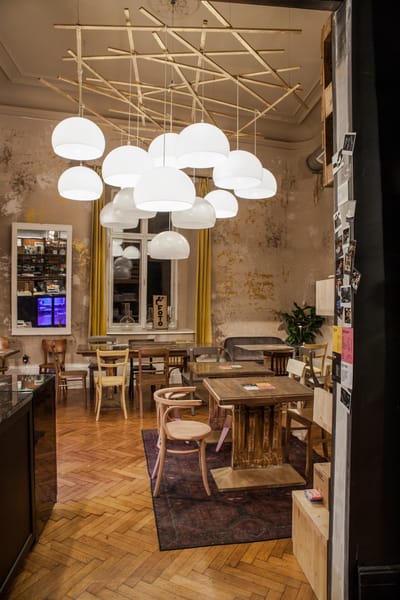
welovebudapest.com/english
Long prevalent in foreign capitals, exhibitions in private homes and pop-up galleries are gaining popularity in Budapest. The former private lodging behind Kálvin tér has long been empty but today houses the long-cherished dream of János Krasznai and Gábor Zsigmond to combine gallery, café and refuge for analogue photography: Főfoto.
Read MoreGuberálás hardcore
János and Gábor are BOTH photographers, but now I went to them because they had amassed an interesting amount of interesting lump.
Read More